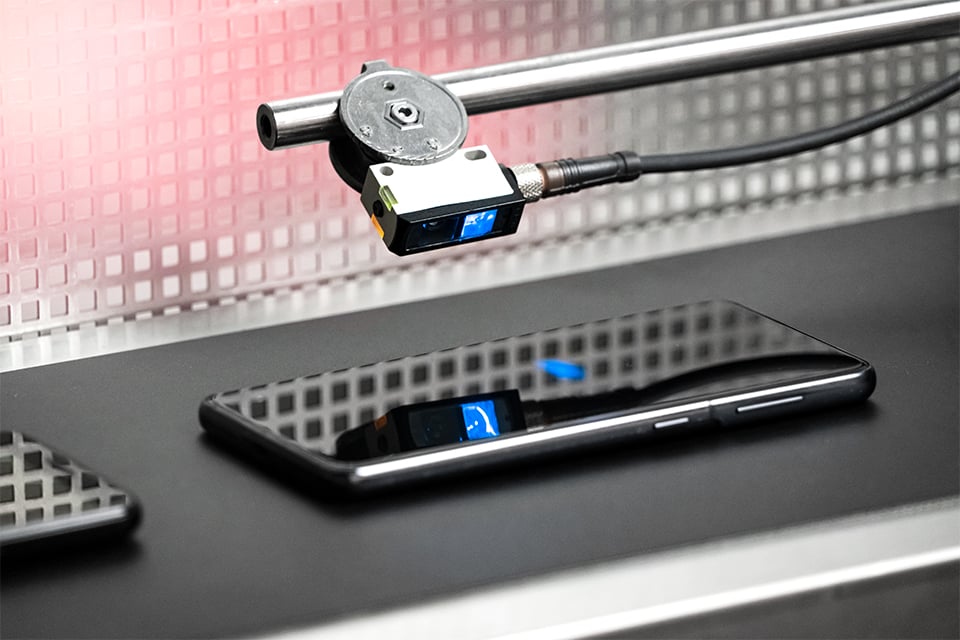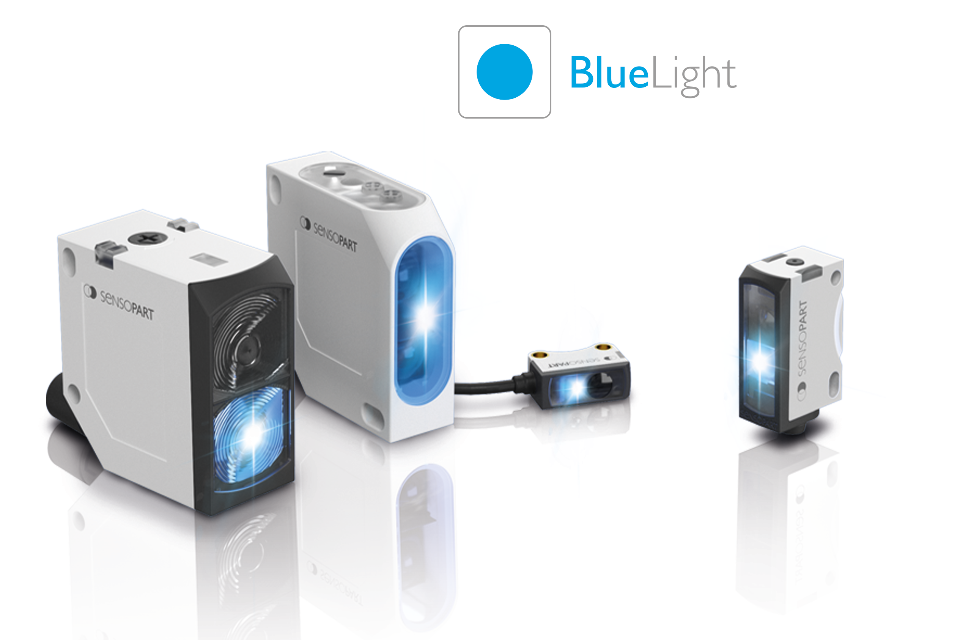Dark Object Detection in Action
A comparison between a blue light
and red light sensor in detecting dark objects
How do BlueLight sensors improve upon red light sensors? In this direct comparison video, we placed the sensors side-by-side and ran a sequence of tests to illustrate the exact moment of switching and the precise conditions that separate the efficacy of the two systems. We explored dark, non-reflective surfaces moving through varying distances, we tested different angles of incidence, various curved surfaces being moved laterally, and finally, highly reflective dark surfaces through complete rotation. The results speak for themselves.

Why BlueLight matters
By their very nature, dark objects appear dark because they do not reflect much light. So receiving reflected light from them is already difficult. This is where blue light’s shorter wavelength resists absorption to enable more reliable detection.




